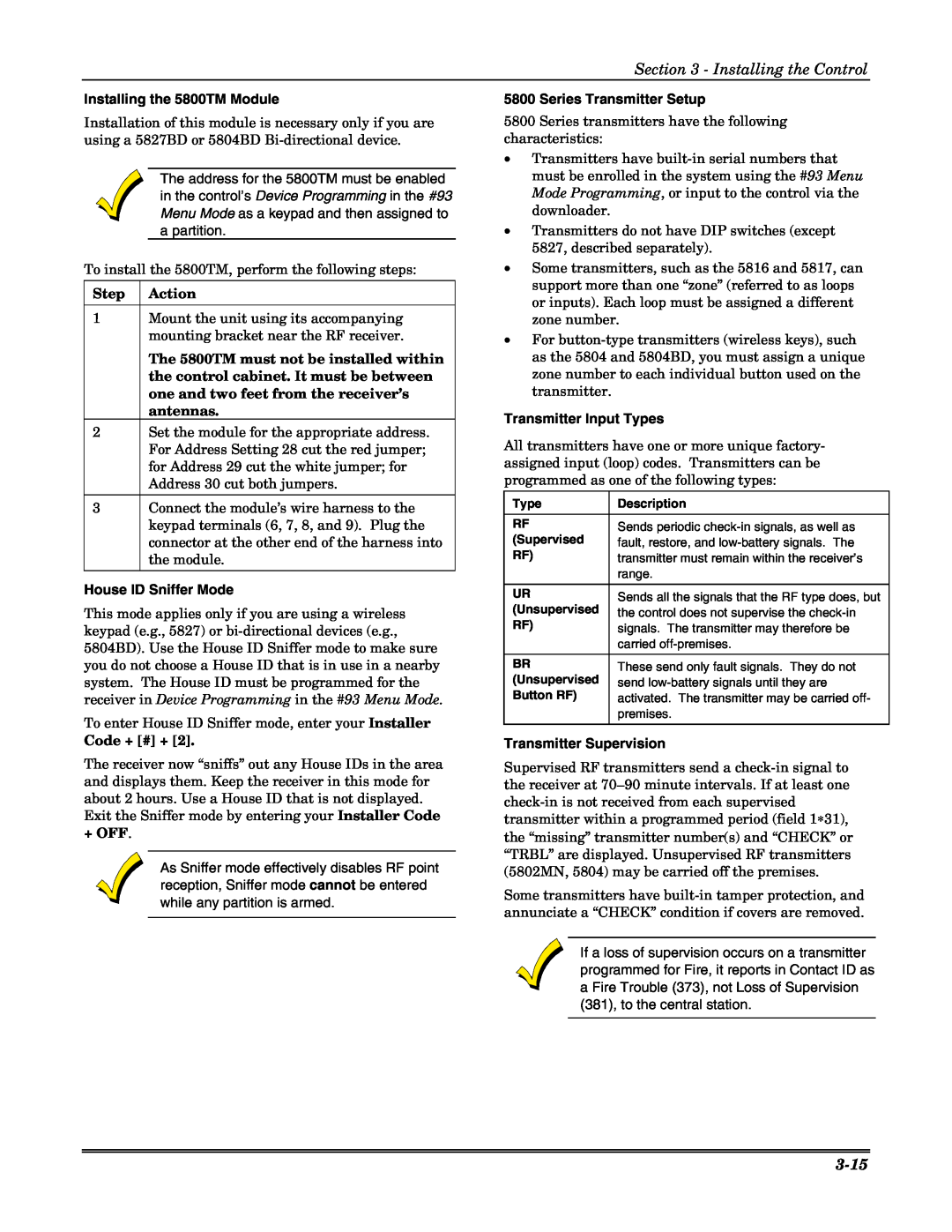
Section 3 - Installing the Control
Installing the 5800TM Module
Installation of this module is necessary only if you are using a 5827BD or 5804BD
The address for the 5800TM must be enabled in the control’s Device Programming in the #93 Menu Mode as a keypad and then assigned to a partition.
To install the 5800TM, perform the following steps:
Step Action
1 | Mount the unit using its accompanying |
| mounting bracket near the RF receiver. |
| The 5800TM must not be installed within |
| the control cabinet. It must be between |
| one and two feet from the receiver’s |
| antennas. |
2 | Set the module for the appropriate address. |
| For Address Setting 28 cut the red jumper; |
| for Address 29 cut the white jumper; for |
| Address 30 cut both jumpers. |
5800 Series Transmitter Setup
5800 Series transmitters have the following characteristics:
•Transmitters have
•Transmitters do not have DIP switches (except 5827, described separately).
•Some transmitters, such as the 5816 and 5817, can support more than one “zone” (referred to as loops or inputs). Each loop must be assigned a different zone number.
•For
Transmitter Input Types
All transmitters have one or more unique factory- assigned input (loop) codes. Transmitters can be programmed as one of the following types:
3 | Connect the module’s wire harness to the |
| keypad terminals (6, 7, 8, and 9). Plug the |
| connector at the other end of the harness into |
| the module. |
House ID Sniffer Mode
This mode applies only if you are using a wireless keypad (e.g., 5827) or
To enter House ID Sniffer mode, enter your Installer
Type
RF (Supervised RF)
UR (Unsupervised RF)
BR (Unsupervised Button RF)
Description
Sends periodic
Sends all the signals that the RF type does, but the control does not supervise the
These send only fault signals. They do not send
Code + [#] + [2].
The receiver now “sniffs” out any House IDs in the area and displays them. Keep the receiver in this mode for about 2 hours. Use a House ID that is not displayed. Exit the Sniffer mode by entering your Installer Code
+ OFF.
As Sniffer mode effectively disables RF point reception, Sniffer mode cannot be entered while any partition is armed.
Transmitter Supervision
Supervised RF transmitters send a
Some transmitters have
If a loss of supervision occurs on a transmitter programmed for Fire, it reports in Contact ID as a Fire Trouble (373), not Loss of Supervision (381), to the central station.
